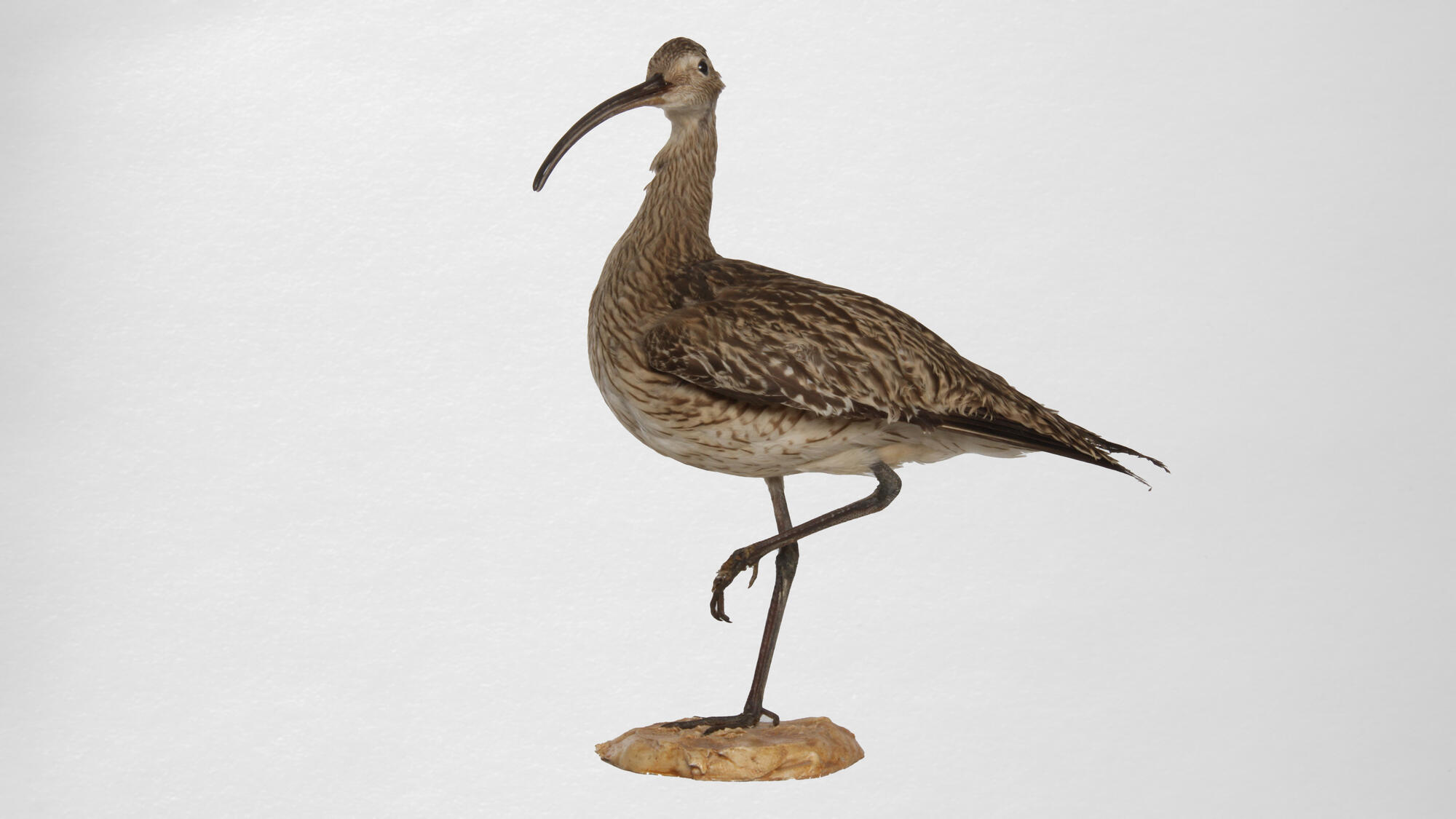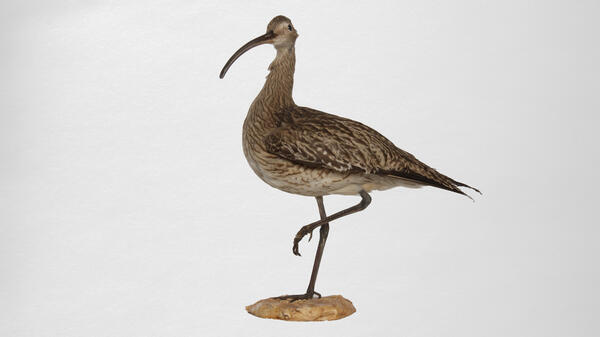The Eurasian curlew belongs to the Sandpiper family (Scolopacidae), which in turn are included in the suborder of Waders (Charadrii). Among waders, the Eurasian curlew is the largest bird; its size is comparable to the mallard duck.
The body length of the Eurasian curlew reaches 60 centimeters, the wingspan is 80–100 centimeters, and the adult bird weighs from 600 to 1300 grams. The Eurasian curlew has a spotted body — it is brown-gray with black specks. The underside of the wing, uppertail and abdomen are white, with narrow longitudinal streaks on the sides, chest and crown.
The Eurasian curlew is a cautious, vigilant and vociferous sandpiper. It usually walks slowly in search of food, but is able to run quickly if necessary. This bird swims well, although not as willingly and often as the oystercatcher. The curlew appears to fly slowly, but rather quickly, in the air it is able to turn sharply and skillfully.
The Eurasian curlews feed on various insects, small mollusks, worms and other invertebrates, catch lizards, frogs, and sometimes small rodents. They eat berries, seeds, nodules, bulbs. They collect food on the surface of the earth, in shallow waters, extract it from soft soil, silt or wet sand with the help of their long beak.
In Russia, the Eurasian curlews nest from the border of the northern taiga to the steppe zone, from the European part of the country to the Trans-baikal. They settle in vast flooded meadows, grassy or mossy bogs with dry areas and islets, as well as in not very dry steppes within one or two kilometers from the water. They live in pairs and occupy a large nesting territory, which the male demonstrates and denotes to other birds during current flights.
The Eurasian curlew is most active in the morning, although sometimes it flies out during the day, and occasionally at night. At this time, the male spends a lot of time in aerial games. It hovers high in the air above the place where its female sits or walks, and melodiously whistles “wood-wood, wood-wood”, then quickly glides down on spread wings, repeating the same whistle that turns into a sonorous trill.
Curlews arrange a nest on the ground, in a dry place. It looks like a small pit sparsely covered with dry stems. The diameter of the nest reaches 20 centimeters, the depth is up to 50. A clutch of eggs may contain from 3 to 5 eggs of olive-green, olive-brown or light green color with dark superficial and light deep spots.
Nests with eggs appear in the second half of April or the first half of May, downy chicks begin to hatch closer to summer. They begin to fly around mid-July, and the curlews leave for the winter in August-September.
Curlews overwinter in Africa, Southern Europe and South Asia, sometimes some individuals get to remote islands of the Pacific Ocean, for example, the Mariana Islands, and the province of Nova Scotia in Canada.
Up until they are two or three years old, young birds live in wintering or migratory, partly in the nesting area, and in adulthood they return to nest to the same places.
The body length of the Eurasian curlew reaches 60 centimeters, the wingspan is 80–100 centimeters, and the adult bird weighs from 600 to 1300 grams. The Eurasian curlew has a spotted body — it is brown-gray with black specks. The underside of the wing, uppertail and abdomen are white, with narrow longitudinal streaks on the sides, chest and crown.
The Eurasian curlew is a cautious, vigilant and vociferous sandpiper. It usually walks slowly in search of food, but is able to run quickly if necessary. This bird swims well, although not as willingly and often as the oystercatcher. The curlew appears to fly slowly, but rather quickly, in the air it is able to turn sharply and skillfully.
The Eurasian curlews feed on various insects, small mollusks, worms and other invertebrates, catch lizards, frogs, and sometimes small rodents. They eat berries, seeds, nodules, bulbs. They collect food on the surface of the earth, in shallow waters, extract it from soft soil, silt or wet sand with the help of their long beak.
In Russia, the Eurasian curlews nest from the border of the northern taiga to the steppe zone, from the European part of the country to the Trans-baikal. They settle in vast flooded meadows, grassy or mossy bogs with dry areas and islets, as well as in not very dry steppes within one or two kilometers from the water. They live in pairs and occupy a large nesting territory, which the male demonstrates and denotes to other birds during current flights.
The Eurasian curlew is most active in the morning, although sometimes it flies out during the day, and occasionally at night. At this time, the male spends a lot of time in aerial games. It hovers high in the air above the place where its female sits or walks, and melodiously whistles “wood-wood, wood-wood”, then quickly glides down on spread wings, repeating the same whistle that turns into a sonorous trill.
Curlews arrange a nest on the ground, in a dry place. It looks like a small pit sparsely covered with dry stems. The diameter of the nest reaches 20 centimeters, the depth is up to 50. A clutch of eggs may contain from 3 to 5 eggs of olive-green, olive-brown or light green color with dark superficial and light deep spots.
Nests with eggs appear in the second half of April or the first half of May, downy chicks begin to hatch closer to summer. They begin to fly around mid-July, and the curlews leave for the winter in August-September.
Curlews overwinter in Africa, Southern Europe and South Asia, sometimes some individuals get to remote islands of the Pacific Ocean, for example, the Mariana Islands, and the province of Nova Scotia in Canada.
Up until they are two or three years old, young birds live in wintering or migratory, partly in the nesting area, and in adulthood they return to nest to the same places.


